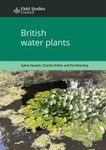About this book
Reprinted from HYDROBIOLOGIA, 467 (2003).
Mexican limnological studies, with a long and honorable history of about 100 years, have in recent times gained importance in teaching at undergraduate and postgraduate levels and research. Rapid industrialization and urbanization has resulted in pollution in many inland waterbodies, some of which have even intentionally been made into terrestrial zones. In order to halt further deterioration in natural epicontinental waterbodies in Mexico, the National Association of Limnology was formed in 1997 with a modest membership of 200 workers from all over the Mexican Republic. Under the auspices of this august association, the first National Limnological Conference was organized during 1999. Some of the works presented during the conference have been included in the present proceedings. Some additional works not presented during the conference were also considered for inclusion in order to give a broad vision of limnological research in Mexico. The present volume comprises aspects of both basic and applied limnology. They include works on physical, chemical, and biological limnology, as well as experimental approaches in selected areas.
Contributions from investigators regarding aquatic conservation and biodiversity were specifically not available and therefore, these aspects are considered in various included works. Most manuscripts deal with lentic aquatic resources. This is not surprising since Mexican limnology followed the general study trend of that from temperate limnology. Despite this, we must emphasize that lotic resources in Mexico are quite important both locally and regionally. This does not mean that rivers are not under limnological research in Mexico, just that their study has only recently begun.
It is the intention of the volume to stimulate a larger section of limnologists to further research in this field. It is to be hoped that policy-framing governmental authorities in Mexico will benefit from it, and consider some of the aspects described so that further damage to the epicontinental waterbodies can be halted, and remedial measures can be considered in the future.
Contents
Preface. List of referees. A re-evaluation of the Macrothrix rosea-triserialis group, with the description of two new species (Crustacea Anomopoda: Macrothricidae); H.J. Dumont, et al. Branchinecta oterosanvicentei n. sp. (Branchiopoda: Anostraca), a new fairy shrimp from the Chihuahuan desert, with a proposal for the conservation of the Branchinectidae of Mexico; H. Obregon-Barboza, et al. The external micro-anatomy of the cephalon of the asellotan isopod Craseriella anops; E. Escobar, et al. Population growth of Asplanchna sieboldi fed two Brachionus spp. (Rotifera) raised on green alga and baker's yeast; S.S.S. Sarma, et al. Nitrogen fixation patterns displayed by cyanobacterial consortia in Alchichica craterlake, Mexico; L.I. Falcon, et al. Phytoplankton of cenotes and anchialine caves along a distance gradient from the northeastern coast of Quintana Roo, Yucatan Peninsula; M. Sanchez, et al. Phytoplankton composition and biomass in a shallow monomictic tropical lake; J. Garcia-Rodriguez, R. Tavera. Seasonal variations of zooplankton abundance in the freshwater reservoir Valle de Bravo (Mexico); P.R. Garcia, et al. Oligochaetes from six tropical crater lakes in Central Mexico: species composition, density and biomass; L. Peralta, et al. Fish abundance and trophic structure from the commercial catch in Lake Patzcuaro, Mexico; C.A. Berlanga-Robles, et al. Spatial and temporal variation patterns of a waterfowl community in a reservoir system of the Central Plateau, Mexico; J.B. Severo, et al. Structure of a pond community in Central Mexico; E. Escobar-Briones, et al. On the dynamical response of Lake Chapala, Mexico to lake breeze forcing; A.E. Filonov. Interaction of water quantity with water quality: the Lake Chapala example; O.T. Lind, L.O. Davalos-Lind. Sensitivity of Mexican water bodies to regional climatic change: three study alternatives applied to remote sensed data of Lake Patzcuaro; A. Gomez-Tagle Chavez, et al. Characterization of small shallow ponds with color video imagery in Central Mexico; J. Lopez-Blanco, L. Zambrano. Lake Patzcuaro (Mexico): a controversy about the ecosystem water regime approached by field references, climatic variables, and GIS; F.W. Bernal-Brooks, et al. Developing diatom-based transfer functions for Central Mexican lakes; S.J. Davies, et al. Hydrogeochemical and biological characteristics of cenotes in the Yucatan Peninsula (SE Mexico); J.J. Schmitter-Soto, et al.
Customer Reviews
































![Coraux Constructeurs de Récifs des Caraïbes [Coral Reef Builders of the Caribbean]](http://mediacdn.nhbs.com/jackets/jackets_resizer_medium/24/249211.jpg?height=150&width=99)













